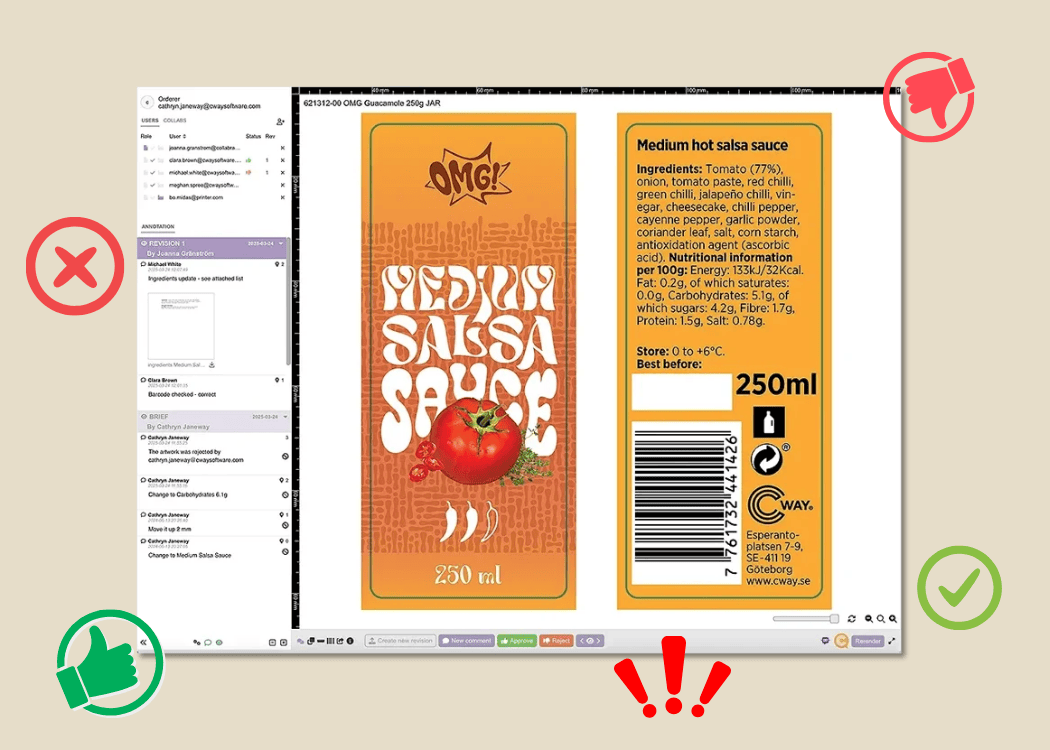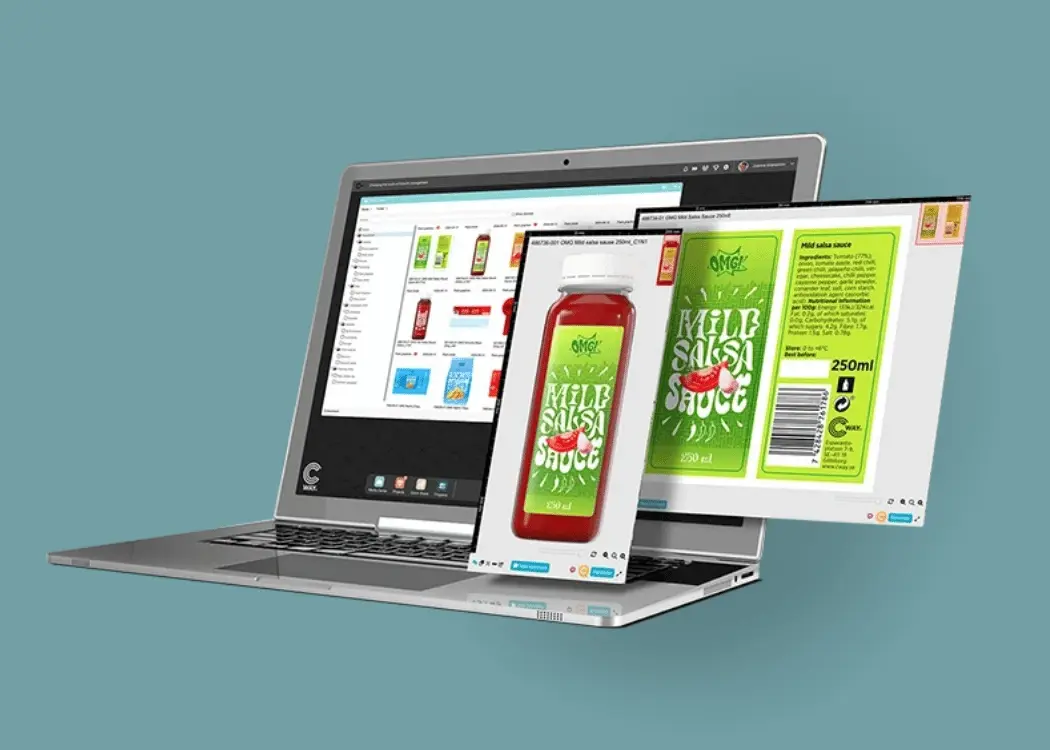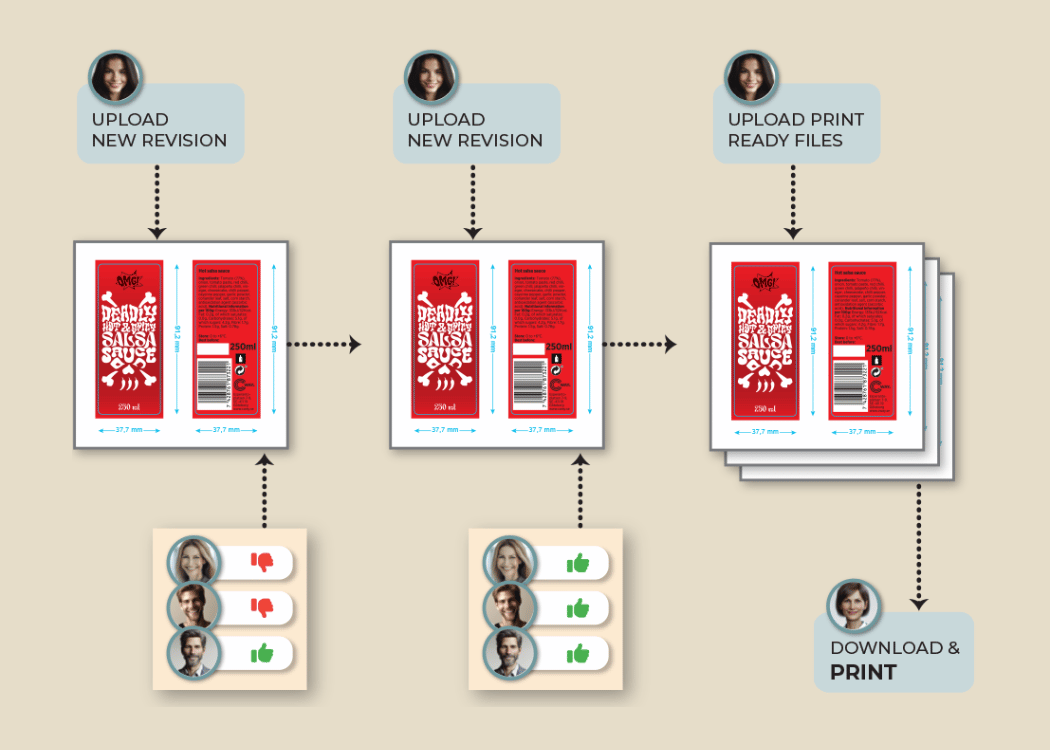Core features of online proofing software every brand needs
Looking to upgrade your review and approval process in 2025? In this article, we explore the top features of online proofing software that packaging,...
2 min read
Ekaterina Skalatskaia
:
Apr 2, 2025 8:42:01 AM

Online proofing is transforming how packaging and design teams review and approve artwork. Instead of juggling endless email threads, outdated file versions, and unclear feedback, teams can now collaborate in one central platform. In this article, we’ll explain what online proofing is, how it works, and why it’s a smarter way to manage the approval process—especially for packaging, labeling, and brand content.
Online proofing is the digital method of managing and reviewing creative files—like packaging artwork, labels, or brand content—in a centralized system. Instead of sending PDFs back and forth over email, teams can collaborate in real-time, leaving feedback directly on the file.
This speeds up the artwork approval process, reduces costly errors, and keeps everyone aligned throughout the approval workflow.
Packaging teams handle a range of complex tasks, from labeling processes to managing regulatory compliance and final print production. Each step often involves designers, marketers, quality assurance, and external partners.
Online proofing tools and design approval software help teams:
Eliminate version confusion with built-in version control systems
Track progress with visual approval workflows
Ensure compliance and consistency with content approval software
With clear audit trails and easy access to feedback, brands avoid bottlenecks and costly reprints.
Pro Tip: Use online proofing software with built-in version control systems to avoid working on outdated files and reduce costly rework.
A good approval system goes beyond basic markup tools. The right approval workflow software should offer:
Version control for files to manage updates and changes
Automated notifications to keep stakeholders in the loop
Side-by-side comparisons for quick visual checks
Integrated brand content approval tools for marketing teams
Support for automated packaging systems and integrations
These features support seamless artwork processes and faster decision-making, especially when working across multiple teams or regions.
Did You Know? Teams using artwork proofing software report up to 40% faster time-to-market.
Cway is built for modern packaging workflows. Its online proofing tools are designed to simplify complex content approval workflows, giving teams clarity and control over every step of the artwork approval process.
With Cway, you get:
Centralized access to files with structured version control systems
Role-based approvals using intuitive content review and approval tools
A visual, trackable approval workflow tailored to your team’s needs
Whether you’re working on product labels, seasonal packaging updates, or large-scale launches, Cway helps you collaborate better—and deliver faster.
➡️ See how Cway helps your team work smarter with online proofing and automated workflows.
It centralizes feedback, supports version control for files, and tracks approvals in one place. This reduces confusion, avoids missed edits, and speeds up the entire process.
Look for tools with version control, annotation capabilities, customizable approval workflows, and integration with your existing systems. Features like role-based access, audit trails, and real-time collaboration are also essential.
Cway offers all of these in one intuitive platform—designed specifically to support complex artwork and labeling processes. With Cway, teams can manage content approvals with greater speed, structure, and visibility.
Yes. Most online proofing platforms offer role-based access, secure file storage, and compliance features to protect sensitive brand assets.
Cway takes security seriously—with enterprise-grade encryption, controlled user permissions, and detailed audit logs, ensuring your packaging files and brand content stay protected at every stage of the approval process.

Looking to upgrade your review and approval process in 2025? In this article, we explore the top features of online proofing software that packaging,...
Managing artwork across teams, versions, and approvals can get messy fast. Without the right system, you end up with delays, confusion, and costly...

The artwork approval process helps teams make sure packaging, labels, and designs are correct before they go live. But if the process isn’t clear, it...